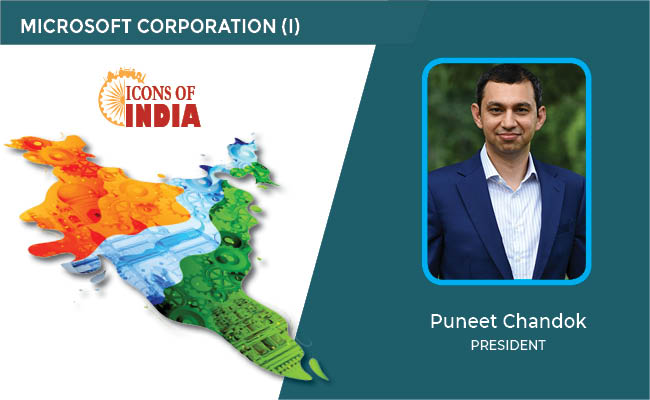The Government is pushing the country at par with global chip industry
By MYBRANDBOOK

As the world is facing an acute shortage of computer chips, hundreds of billions will be spent by governments and corporations in coming years on a 'chip race' with geopolitical as well as economic implications. The electronics market in India is currently $160 billion and is expected to touch $400 billion by 2026. The surprising thing is there is a value addition of only 15 percent to the Indian economy and the remaining 85 percent is either imported or completely knocked down units or semi-knocked down units and are absorbed by the Indian economy without any value creation.
Forty percent of an item’s value is in components and another 40 percent is in IP and technology. So, your design should come from India and that IP value should get recognised in India. Patents should be filed in India. There was sudden growth arising due to the COVID-19, continued stay-at-home era caused by the coronavirus pushed demand beyond levels projected by chipmakers.
Lockdowns spurred growth in sales of laptops to its highest in a decade. Home-networking gear, webcams and monitors were snapped up as office work moved out of the office, and Chromebooks as school left school. Sales also jumped for home appliances from TVs to air purifiers, all of which now come with customized chips.
The Global semiconductor manufacturing giant, TSMC and Samsung are working on 3nm mass production by 2022. The rise of artificial intelligence is another force pushing chipmakers to innovate: AI relies on massive data processing. More efficient or power-saving designs are also becoming a critical consideration given the so-called internet of things -- a universe of smart or connected devices from the beefiest phones to the most common light switches and refrigerators -- is expected to swell usage of chips exponentially in coming years.
Now things are getting changed, the USP of India is very strong when it comes to semiconductor design or any software development related to semiconductors. We are leaders in that. The only challenge is that the talent in India is working in captive design centres of leading global companies. We hardly have fabless product design companies from India, for India and global. We don’t have IP creations for India; all the IP created is for someone else, and patents are filed outside, which gets recognised outside.
There are so many mobile phone manufacturing companies in India, but the entire kit comes from outside. We are just doing the soldering and assembly. In a $100 phone, India makes only $10… This is definitely creating blue-collared jobs and manufacturing, but what about value creation? EMS (electronics manufacturing services) has picked up in India, which creates only 15-17 percent value recognition. The opportunity, therefore, is to increase value addition to the Indian economy from 15 percent to a larger share, thereby growing the Indian economy.
India should have had its own semiconductor fab decades ago. Sadly, so far, local manufacturing was never on anybody’s agenda. At least now, the importance has been realised and incentive schemes have been launched. The government is doing everything it can to bring us at par with the global industry.


Legal Battle Over IT Act Intensifies Amid Musk’s India Plans
The outcome of the legal dispute between X Corp and the Indian government c...

Wipro inks 10-year deal with Phoenix Group's ReAssure UK worth
The agreement, executed through Wipro and its 100% subsidiary,...

Centre announces that DPDP Rules nearing Finalisation by April
The government seeks to refine the rules for robust data protection, ensuri...

Home Ministry cracks down on PoS agents in digital arrest scam
Digital arrest scams are a growing cybercrime where victims are coerced or ...


Icons Of India : Puneet Chandok
Puneet Chandok is President, Microsoft India & South Asia and is respo...

ICONS OF INDIA : VIJAY SHEKHAR SHARMA
Vijay Shekhar Sharma is an Indian technology entrepreneur and multimil...

Icons Of India : NIKHIL RATHI
Co-founder & CEO of Web Werks, a global leader in Data Centers and Clo...


NSE - National Stock Exchange
NSE is the leading stock exchange in India....

GeM - Government e Marketplace
GeM is to facilitate the procurement of goods and services by various ...

C-DAC - Centre for Development of Advanced Computing
C-DAC is uniquely positioned in the field of advanced computing...


Indian Tech Talent Excelling The Tech World - Satya Nadella, Chairman & CEO- Microsoft
Satya Nadella, the Chairman and CEO of Microsoft, recently emphasized ...

Indian Tech Talent Excelling The Tech World - NEAL MOHAN, CEO - Youtube
Neal Mohan, the CEO of YouTube, has a bold vision for the platform’s...

Indian Tech Talent Excelling The Tech World - REVATHI ADVAITHI, CEO- Flex
Revathi Advaithi, the CEO of Flex, is a dynamic leader driving growth ...
 of images belongs to the respective copyright holders
of images belongs to the respective copyright holders